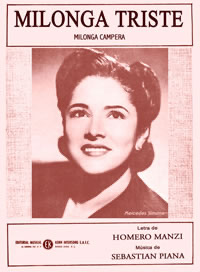The Future of Milonga
- Jaimes Friedgen

- Dec 10, 2020
- 3 min read
Are Milonga and Tango Vals going extinct?
When I started going to Milongas and Tango parties as a teenager, Tandas didn’t really exist yet on a widespread level. Maybe a few DJ’s in Buenos Aires and a few others scattered around the world were organizing their playlists like this, but certainly not in Los Angeles at the time. The two main weekly dances were the Argentine Association on Sunday and the Realtors Hall on Friday night.
At the Association, a couple of older Argentine guys made playlists on cassette tapes, off of records, radio shows, some of the new cds, and other cassette tapes. There were no cortinas and a Di Sarli recording could very likely be followed by a Troilo piece, which in turn might be followed by a Pugliese instrumental. Rarely did more than three or four songs go by without a Milonga or a Vals being played. Often we would dance to two or three Tangos, a couple of Milongas, another two or three tangos, then a couple of Valses. More Tangos were played than Milongas and Valses throughout the course of the evening, but not by nearly as much as today.
As the use of Tandas began to spread, experimentation with the length of a Tanda ranged from three songs to as many as ten. Eventually four song Tandas became the worldwide standard and two Tango Tandas followed by a Milonga or Vals Tanda, alternating, became the format most DJ’s use to this day. The Milonga and Vals Tandas were still four songs however. So the ratio of Milongas to Tangos had dropped from nearly a third to a quarter of the tracks played during a Tango evening.
With Milonga being played less often, new generations of dancers had less practice time and affinity for the dance from familiarity. Within a few years, most communities and festivals had reduced Milonga and Vals Tandas to three songs, bringing the ratio of Milongas played down to less than a fifth of total songs played. This was very upsetting to hardcore Milonga fans. The first time Christa heard a three-song Milonga Tanda she nearly lost it. It would take many a drunken tirade before she would finally accept the direction playlists were evolving.
In addition to changing playlists, the best Milonga dancers have typically been older Argentine dancers who started as teenagers at the end of the Golden Era. Having lost countless numbers of our best Milongueros in the last two decades, we have also lost our everyday (night) examples of how to dance Milonga well, especially in a non-performance capacity. So new generations resort to dancing Tango, just faster, when a Milonga is finally played. But then it just feels like a rushed Tango. Tango danced at Tango speed is always going to feel better. The steps great Milonga dancers use while dancing Milonga specifically feel great while at a Milonga tempo. This knowledge is slowly disappearing from our worldwide Tango community.
There are of course a great many Tango teachers who also teach excellent Milonga and Vals classes and show us which steps and rhythms work better for the faster speeds and different feeling grooves. But will it be enough to preserve these styles of dance? The trend doesn’t look so promising over the last couple of decades. Will they eventually go extinct like so many great (and some not so great) dance forms of the past? Or will they evolve into something else entirely… something unrecognizable in another century?
I hope we see a resurgence in the popularity of Milonga. I think it definitely could happen. The only thing I can recommend to individually help preserve and even forward the Art of Dancing Milonga is that everyone put on classic Milongas at home and dance them by yourself, even if you live with a dance partner. Even if all you’ve got is a four-by-four foot square of linoleum in your kitchen, that’s perfect. Even better maybe. YouTube, Spotify or any other major music streaming outlets will likely have hundreds of Golden-Age Milongas you can play. Lead or follow, it doesn’t matter what steps you do… and you really can’t be wrong about what you’re doing when it’s just you. Put the music on, dance around, do your best. Repeat. If you’re having trouble getting started, look up some videos for inspiration. Don’t forget to wear socks if you have downstairs neighbors. Sock Milonga is great, but you will go through them quickly.
Please tell us in the comments what your all-time top three favorite Milonga recording are, and/or tell us who your favorite Milonga dancers and teachers are, and don’t be afraid to include a link to a video so folks can check them out!









I love you guys so much. Top 3 milongas? Donato's Ella Es Asi Ta Milonga, Canaro's Milonga Brava, and Demare's Carnavalito, with Calo's Azabache right behind. As for teachers or videos, I've got one. https://youtu.be/1_zjYulsDa8. I don't remember where I found this, I can't find it anymore, so I put it on youtube. It's staged and a little clowny, but... the peaceful, playful musicality is brilliant. It gives me goosebumps every time I watch it.
Soñar Y Nada Mas(valz/milonga - my favorite of all tango songs) by Alfredo de Angelis, Negrito(Francisco Canaro recording), Mi Novia De Ayer(valz/milonga) again by Alfredo de Angelis(my favorite tango composer - he wrote and played for dancers). Teachers are Julio Balmaceda y Corina de la Rosa. Their relationship appeared to be strained already when they taught in Seattle in ~2010? But Balmaceda's cheerful style and constant smile were just perfect for milonga, as opposed to say stone-faced Fabián Salas. Style-wise probably "shallow" back ochos at double speed are the most delightful of all milonga moves. Naturally people love and learn tango and become good every day so there maybe many younger milonga dancers- these are just my personal references.